SUMMARY
This is AI generated summarization, which may have errors. For context, always refer to the full article.
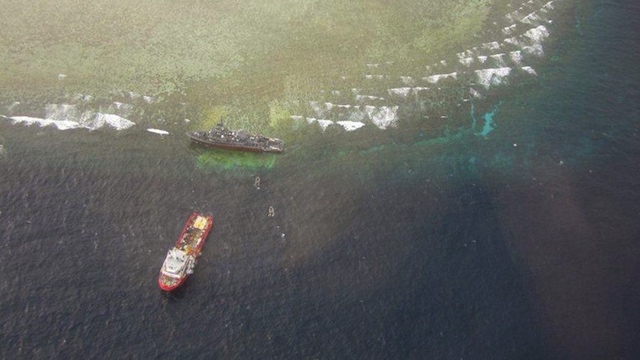
MANILA, Philippines (UPDATED) – The US Navy has changed its mind and now wants to dismantle the USS Guardian and cut it into sections to minimize further damage to the coral in Tubbataha Reef Natural Park.
The new plan has been submitted by the Americans to the Philippine Coast Guard (PCG) for final approval, US Navy task force spokesman Lt Cmdr James Stockman said on Wednesday, January 30.
“Our recommendation is to dismantle the damaged ship and remove it in sections,” Stockman told Rappler.
Stockman explained that once their plan is approved, the US Navy will implement it with “the right team of experienced professionals to conduct this complex operation and to ensure that it is done safely while minimizing damage to the surrounding marine environment.”
“We continue to work closely at all levels with the PCG, Navy and government personnel. We are grateful for the support we have received as we all work together to recover the USS Guardian and minimize further damage” to Tubbataha, he added.
The minesweeper ran aground on January 17 inside the protected area of the UNESCO World Heritage site and a diver’s paradise in the Sulu Sea.
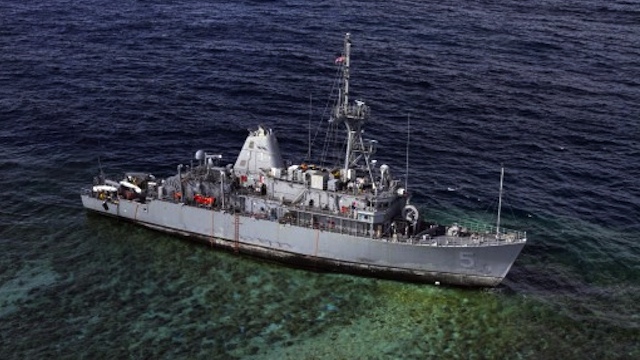
Coast Guard yet to receive draft
While the US Navy claimed to have already submitted the plan to the concerned authorities, the Coast Guard said it had not yet received the draft on Wednesday morning.
“[The salvage plan is] still with them. We are waiting for [US Navy Rear Admiral Tom] Carney to submit it,” PCG Palawan Cmdr Efren Evangelista told Rappler.
Evangelista said that they don’t know the content of the final salvage plan.
“We don’t want to second guess them,” Evangelista replied when asked about the new recommendation to first cut the vessel into pieces before hoisting the parts with a crane and transferring them to a barge.
Commodore Joseph Rustom Peña, chief of the Naval Forces West Command, also declined to evaluate the new plan.
“The Coast Guard will comment on that. I don’t like to preempt them,” he told Rappler.
The US Navy has been required to submit their plan to extricate the ship for approval before the salvage operation starts, PCG officials stressed on Tuesday.
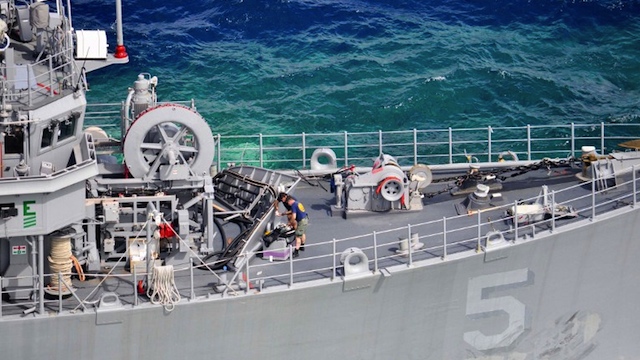
Dismantling ship ‘only supportable action’ – US Navy
The US Navy on Friday, January 25, announced its decision to lift the whole USS Guardian with giant floating cranes and transfer it to a barge instead of dismantling it or pulling it from the coral with a tugboat.
Two cranes are already on their way from Singapore — where the private salvage company hired by the Americans is based — but finally the close proximity of the reef was deemed too risky.
“Our only supportable option is to dismantle the damaged ship and remove it in sections,” US Pacific Fleet spokesman Capt Darryn James told the American military publication Defense News.
A military officer in Palawan admitted on Tuesday, before the initial plan was scrapped, that he was not sure that hoisting the vessel was the best idea, as this could be potentially “difficult and more dangerous” to the reef than the other two options discussed.
The officer, who requested anonymity, suggested cutting the hull into smaller parts before lifting it out of the water to avoid damaging more coral when it is moved from its current location.
At least 17 m of the hull are stuck in the reef and have damaged 1,000-1,600 sqm of coral, according to initial estimates by park officials and the government.
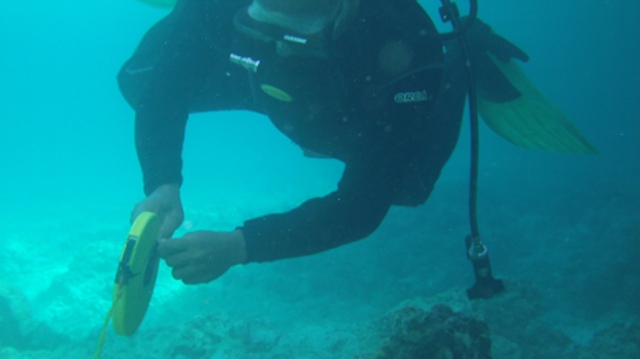
New extrication plan ‘more risky’ – park officials
Thousands of litres of oil on board the USS Guardian have been removed but the vessel is being battered by huge waves, causing it to gouge a destructive trail along the reef, according to superintendent of the Tubbataha marine park Angelique Songco.
She said dismantling the ship would further damage the reef but letting it remain there longer would lead to even more harm.
“It will cause more damage the longer it is left there,” she said.
The head of the Philippine office of the World Wildlife Fund, Jose Maria Lorenzo Tan, agreed the ship should be dismantled if there was no other way to shift it off the reef.
“If this is the only option, then the sooner they can remove it, the better. They cannot risk that the ship simply break apart,” he said.
The US Navy has repeatedly apologised for the incident but has refused to explain publicly why the vessel was sailing so close to the reef. – with reports from Agence France-Presse/Rappler.com
Add a comment
How does this make you feel?
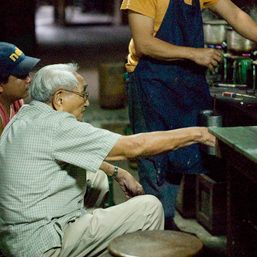



There are no comments yet. Add your comment to start the conversation.